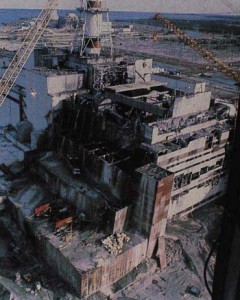Are there differences between Fukushima Dai-ichi and Chernobyl?
And is Fukushima worse than Chernobyl?
A teenager might say “Du-uh!”
My friends from Brooklyn might ask “Is the Pope Catholic?”
Even “Snooki” and “The Situation” might ask “Are you stoopid or what?”
But the people at CNN, ProPublica and the NY Times are asking nuclear power industry experts. That’s like asking Charlie Sheen if cocaine is bad, or asking Lindsay Lohan if she really stole that necklace. They should be asking people like Amory Lovins at the Rocky Mountain Institute, Roger Saillant at Case Western’s Fowler Center for Sustainable Value, Jeremy Grantham at GMO, Cary Krosinsky at Columbia University CERC, anyone connected with academic programs in Sustainability, such as at Marlboro College, the Presidio, Bainbridge, ecological economics, systems dynamics, etc.
So for the record – here are six real differences (as opposed to the nonsense at Pro Publica here and here) and two major points of congruence.
- Chernobyl was one reactor in a complex of three. Fukushima Dai-ishi has six, all shut down. Four are in states of emergency. In addition, six more reactors, three each, at the Fukushima Diani and Onagawa nuclear complexes are in states of emergency.
- Chernobyl is in the forests of Ukraine. Fukushima is on the shores of the Pacific. while the cloud from Chernobyl dispersed radIoactive particles over Europe and North America, triggering birth defects at least as far away as Turkey, much of the radioactive pollutants stayed local. Fukushima is flushing radioactive materials into the Pacific. “Local” has one meaning in soils and another meaning in oceans.
- The disaster at Chernobyl was unknown outside Pripyat and Moscow for a few days after it happened. It was discovered by nuclear engineers in at two plants in Sweden who noticed high levels of radioactive particles outside their plants and normal levels inside the plants. They triangulated the cloud to Chernobyl. That was 1986 – before the Internet as we know it. It took 3 days to a week for the world to know what happened. We are watching the disaster at Fukushira Dai-ichi as it happens.
- Japan is about 200 – 250 miles wide, east to west, at Fukushima. The U. S. says “stay 50 miles away.” Translation: “This event is rendering uninhabitable an area roughly the shape of semicircle with a 50 mile radius on Japan’s eastern shores 100 to 150 miles north of Tokyo. Half of the semicircle is in the Pacific. How many people lived there? What was the value of the land before the earthquake – tsunami – meltdown?
- In 1986 Ukraine was a Soviet Republic. It was not a major component of the global economy. Japan is the number 3 economy in the world. Economic troubles in Japan may adversely effect conditions in the U. S. and Europe.
- Chernobyl was human error. Fukushima was an earthquake,of 9.0 on the Richter scale followed by a tsunami followed by 154 aftershocks greater than 5.0, 27 of which were greater than 6.0. It was an “act of God.”
There are two major points of congruence:
- We are still, 25 years after the event, witnessing after-effects of Chernobyl. We will be witnessing the after-effects of Chernobyl and Fukushima Dai-ichi for the 50 to 100 years.
- Both are manifestations of human arrogance. And we still think we can control nature and the universe. We must learn we can not even control ourselves.
We should, with all deliberate speed, decommission every nuclear power plant. They all leak radiation.
But what to use to generate the power?
Coal? Under normal conditions coal releases more radioactive materials than nuclear power – because coal is a mixture of mostly carbon with impurities including arsenic, lead, mercury, zinc, and thorium and uranium, and the wastes are not regulated or controlled.
Oil? Natural gas? How do we extract oil and natural gas? What are the costs economists call “externalities?” The costs we push onto the government (i.e. the taxpayers) and the costs we push onto our children?
We MUST move to a sustainable energy paradigm. Solar, wind, geothermal, and the negawatt virtual turbines of conservation and efficiency!
——–
Fifth in a series on the economics, ecological economics, finance, logistics, and systems dynamics of nuclear power in the light of the ongoing catastrophe at Fukushima.

